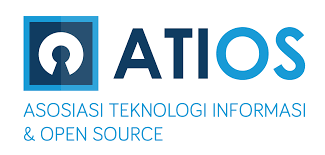Game Interaktif Untuk Melatih Kemampuan Visualisasi Pada Anak TK dengan Metode MDLC
DOI:
https://doi.org/10.58794/santi.v4i2.792Keywords:
Game Visualisasi, Karakter Lucu, Kemampuan Kognitif, Anak TK, Construct 3, AnimasiAbstract
Game merupakan sarana hiburan yang sering digunakan untuk menghilangkan rasa bosan. Namun, banyak game saat ini mengandung kekerasan, yang dapat berdampak negatif pada perkembangan anak. Penelitian ini bertujuan mengembangkan game interaktif dengan karakter lucu sebagai media pembelajaran bagi anak TK. Game ini menggunakan Construct 3 dan dirancang untuk meningkatkan kemampuan kognitif anak usia 4-6 tahun. Game ini berisi aktivitas menyusun huruf nama-nama buah dan hewan yang menarik. Diharapkan animasi karakter lucu dalam game ini dapat meningkatkan daya ingat dan minat belajar anak.
Downloads
References
S. Suh, S. W. Kim, and N. J. Kim, “Effectiveness of MMORPG-based instruction in elementary English education in Korea,” J. Comput. Assist. Learn., vol. 26, no. 5, pp. 370–378, 2010, doi: 10.1111/j.1365-2729.2010.00353.x.
J. P. Gee, What Video Games to Teach Us About. 2007.
M. Prensky, “The Games Generations: How Learners Have Changed,” Comput. Entertain., vol. 1, no. 1, pp. 1–26, 2001, [Online]. Available: http://portal.acm.org/citation.cfm?doid=950566.950596
J. P. Gee, “Learning by Design: Good Video Games as Learning Machines,” E-Learning Digit. Media, vol. 2, no. 1, pp. 5–16, 2005, doi: 10.2304/elea.2005.2.1.5.
Craig A. Anderson and Karen E. Dill, “Video games and aggressive thoughts, feelings, and behavior in the laboratory and in life,” J. Pers. Soc. Psychol., vol. 78, no. 4, pp. 772–790, 2000, doi: 10.1037//O022-3514.78.4.772.
R. Bille, S. P. Smith, K. Maund, and G. Brewer, “Extending building information models into game engines,” ACM Int. Conf. Proceeding Ser., vol. 02-03-December-2014, no. December, 2014, doi: 10.1145/2677758.2677764.
H. E. B. E. R. L. Y. David, “GAME ENGINE DESIGN A Practical Approach to Real-Time”.
V. Guana, E. Stroulia, and V. Nguyen, “Building a Game Engine: A Tale of Modern Model-Driven Engineering,” Proc. - 4th Int. Work. Games Softw. Eng. GAS 2015, no. May, pp. 15–21, 2015, doi: 10.1109/GAS.2015.11.
S. Sintaro, “Fuzzy Logic in Decision Support Systems Using Linear Equations in Construct 3 Game Engine,” J. Artif. Intell. Technol. Inf., vol. 1, no. 2, pp. 82–91, 2023, [Online]. Available: https://doi.org/10.58602/jaiti.v1i2.52
D. B. Clark, M. M. Martinez-Garza, G. Biswas, R. M. Luecht, and P. Sengupta, Driving assessment of students’ explanations in game dialog using computer-adaptive testing and hidden markov modeling. 2012. doi: 10.1007/978-1-4614-3546-4_10.
S. Rai, K. Wong, and P. Cole, “Game construction as a learning tool,” … 2006 Int. Conf. Game …, pp. 231–236, 2006, [Online]. Available: http://dl.acm.org/citation.cfm?id=1234378
J. Wu and C. B. Boulevard, “Why They Enjoy Virtual Game Worlds ? an Empirical Investigation,” Online, vol. 9, no. 3, pp. 219–230, 2008, [Online]. Available: http://www.csulb.edu/journals/jecr/issues/20083/paper4.pdf
N. Vos, H. Van Der Meijden, and E. Denessen, “Effects of constructing versus playing an educational game on student motivation and deep learning strategy use,” Comput. Educ., vol. 56, no. 1, pp. 127–137, 2011, doi: 10.1016/j.compedu.2010.08.013.
S. Hayhow, E. A. Parn, D. J. Edwards, M. R. Hosseini, and C. Aigbavboa, “Construct-it: A board game to enhance built environment students’ understanding of the property life cycle,” Ind. High. Educ., vol. 33, no. 3, pp. 186–197, 2019, doi: 10.1177/0950422219825985.
R. Mosahab et al., “EVALUATING A SIMULATION GAME IN CONSTRUCTION ENGINEERING EDUCATION: THE VIRTUAL CONSTRUCTION SIMULATOR 3,” Eval. A Simul. GAME Constr. Eng. Educ. VIRTUAL Constr. SIMULATOR 3, vol. 4, no. 3, pp. 410–419, 2011.
Downloads
Published
Issue
Section
License
Copyright (c) 2024 Jurnal SANTI - Sistem Informasi dan Teknik Informasi

This work is licensed under a Creative Commons Attribution-ShareAlike 4.0 International License.
SANTI - Journal of Information Systems and Information Technology provides open access to anyone, ensuring that the information and findings in the article are useful to everyone. This journal article's entire contents can be accessed and downloaded for free. In accordance with the Creative Commons Attribution-ShareAlike 4.0 International License.

SANTI - Journal of Information Systems and Information Technology is licensed under a Creative Commons Attribution-ShareAlike 4.0









